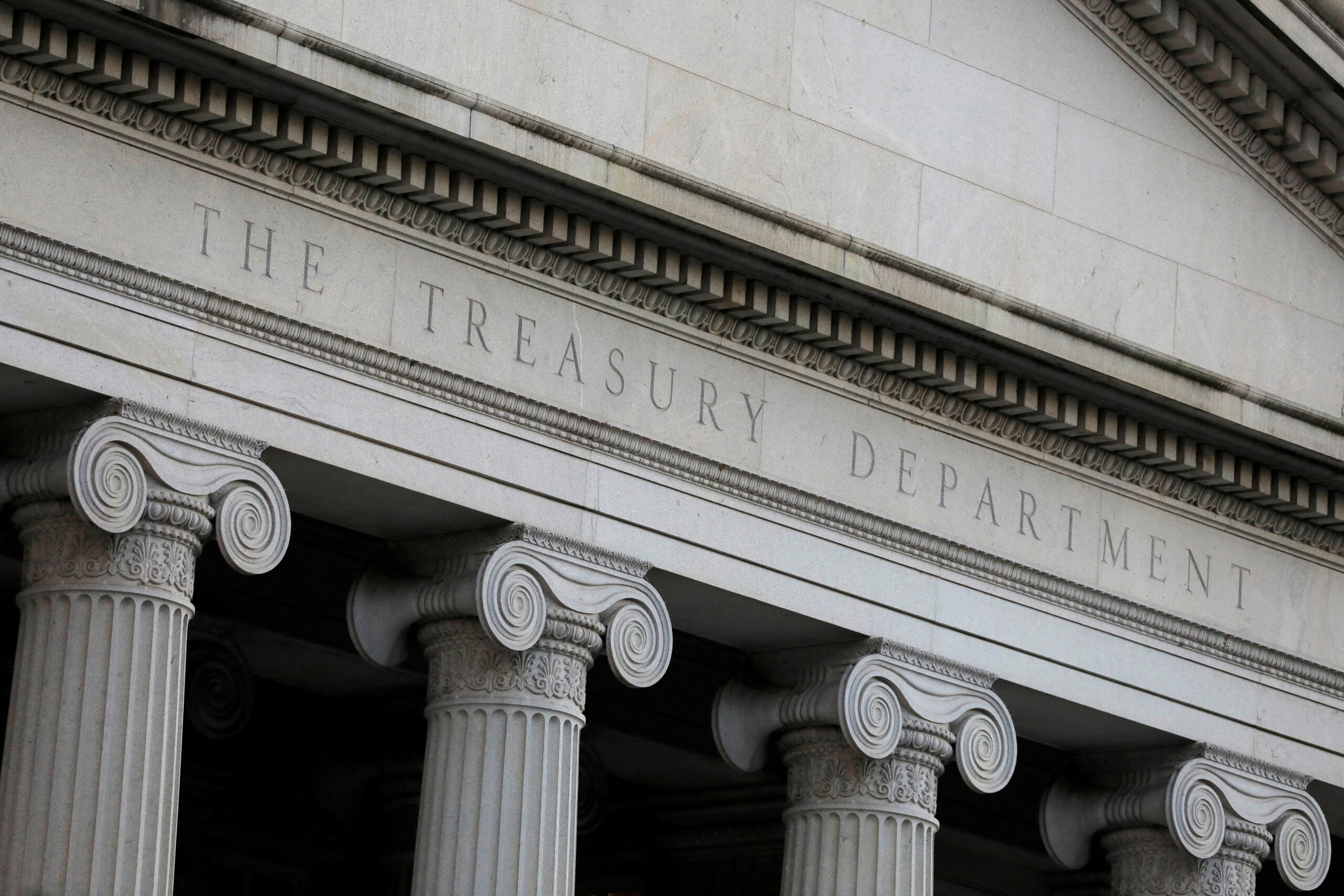A look at the day ahead in U.S. and global markets.
With any thought of U.S. recession off the agenda after a monster September jobs report, doubts about the extent of further Federal Reserve easing have inevitably re-emerged – and now need a cool inflation report this week to keep in check.
Any which way you cut it, last month’s employment report was a robust reading of a labor market in rude health. With payroll gains of 254,000 – more than 100,000 above forecast – a decline in the jobless rate to 4.1% and a pickup in annual wage growth to 4%.
Indeed, 4% seems to be the magic number as the week unfolds.
The report’s strength whacked Treasuries by taking a quarter point out of Fed rate cut expectations through the end of next year and ensured the dollar recorded its best week in two years.
Ten-year yields, which leaped more than 20 basis points over last week, topped 4% on Monday for the first time in two months and 2-year yields were stalking 4% too – flattening the 2-10-year yield curve to near zero in the process.
Fed futures pricing has now not only removed all chance of another half-point cut next month but is even starting to see doubts creep in about any cut at all in November – with only 23 bps in the price and no more than 50bp for the rest of this year.
And the “terminal rate” in this Fed cycle has now jumped to as high as 3.25% – above the 3% landing zone broadly assumed after the central bank’s first outsize cut last month and above the 2.9% level Fed policymakers had indicated as long-term “neutral”.
The dollar index held last week’s 2.1% surge first thing on Monday, not least with the euro hit with another set of dire German industrial orders that stoked speculation of a third European Central Bank cut of the year in 10 days’ time.
French Central Bank Chief Francois Villeroy de Galhau said there would “quite probably” be another rate cut this month. “Now we must also pay attention to the opposite risk, of undershooting our (inflation) objective due to a weak growth and a restrictive monetary policy for too long.”
And yet, far from running scared from the borrowing rate rethink, Wall Street stocks lapped up the seeming removal of recession risk on Friday and set a record high close at 5,765 points.
CRUDE OIL PRICES
The payrolls report saw Goldman Sachs lower the odds on recession over the next 12 months by 5 percentage points to 15% – less than where it would be on any 12-month view historically – and lift its 12-month S&P500 target by 300 points to 6,300. That’s some 10% higher than Friday’s close.
The third-quarter corporate earnings season kicks off later this week and aggregate annual profit growth is set to have expanded 5%-10% during the three months.
But the rates picture will now likely be in thrall to the September consumer price report on Thursday, which is expected to see headline inflation inch down further to a three-year low of 2.3% – and within a whisker of the Fed’s target. While “core” inflation likely remained above 3%, the constellation of robust jobs growth and ebbing, near-target inflation is as good as the central bank could wish for at this point of the cycle.
One possible fly in the ointment is the latest rebound in crude oil prices – which were clocking annual losses of more than 20% all through September but have reared up over the past week amid heightened Middle East tensions and a standoff between Israel and Iran.
On the first anniversary of the Hamas attacks on Israel that have spurred 12 months of intense conflict, crude oil edged up further to $76 per barrel – although they remain about 8% lower than they were a year ago.
The U.S. election is also less than a month away, with non-partisan analysis showing Republican Donald Trump’s economic plans would raise the Federal debt by roughly double the increase under Democrat Kamala Harris’ plans.
On Sunday, Trump said he would slap tariffs as high as 200% on vehicles imported from Mexico as he ratchets up a protectionist trade stance.
Elsewhere, Tokyo and Hong Kong shares were up more than 1% – largely a catchup on Friday’s payrolls surprise. European stocks and U.S. futures fell back.
Key developments that should provide more direction to U.S. markets later on Monday:
* U.S. August consumer credit; Mexico August jobless rate
* St. Louis Federal Reserve President Alberto Musalem, Minneapolis Fed President Neel Kashkari, and Atlanta Fed Chief Raphael Bostic all speak
* Euro zone finance ministers meeting in Luxembourg to discuss European productivity and progress towards capital markets union
* US Treasury auctions 3-, 6-month bills
(Source: ReutersReuters)
Edward Cooke is a financial analyst, freelance writer, and editor. He has six years of experience in financial journalism. He has an in-depth understanding of equities markets, tracking major indices and providing real-time analysis on stock price movements, corporate earnings, and market sentiment. Read Full Bio










